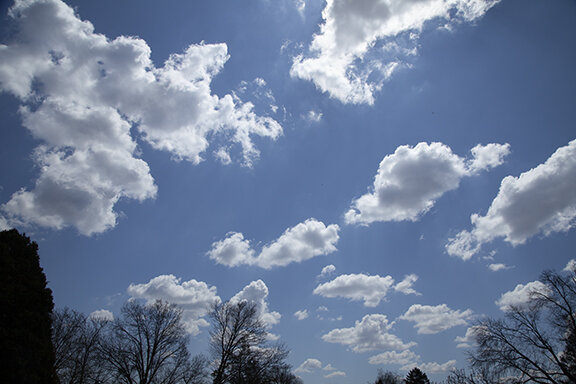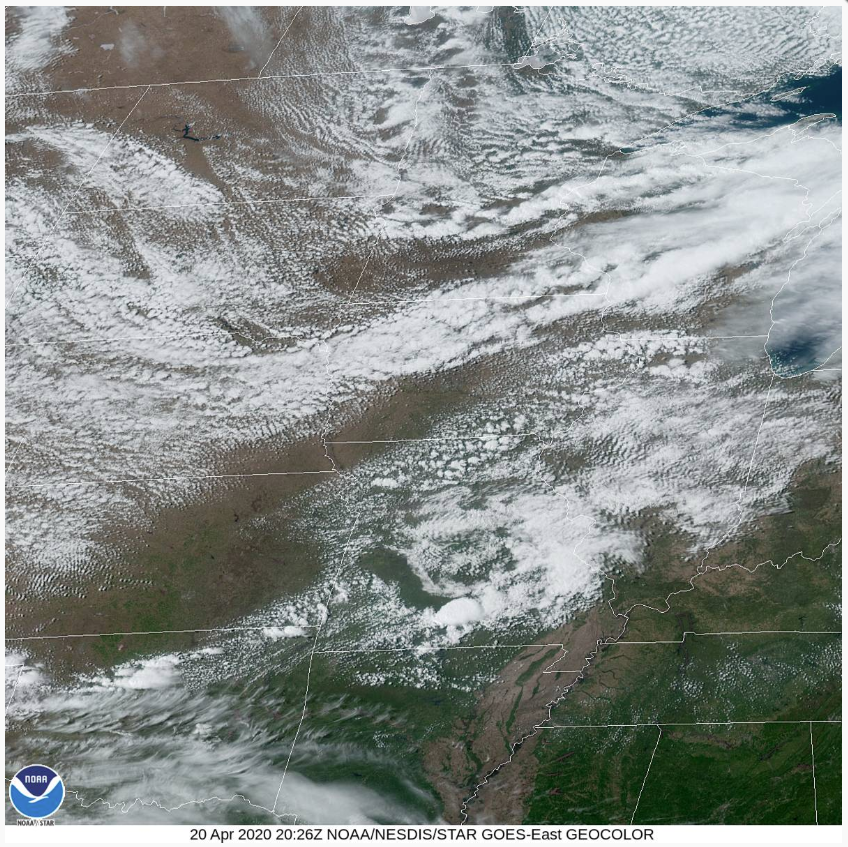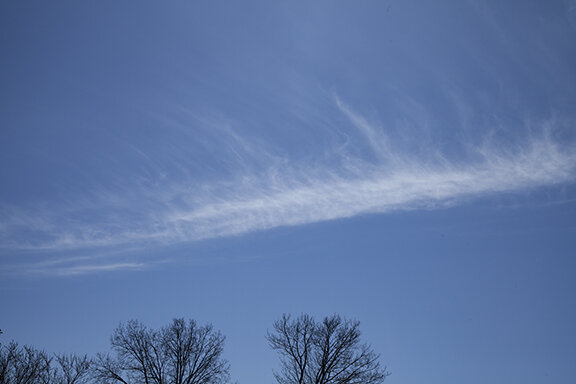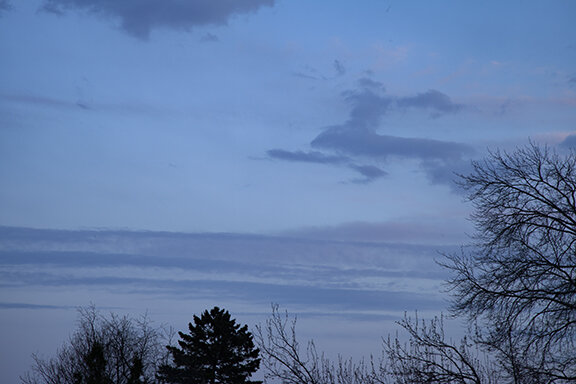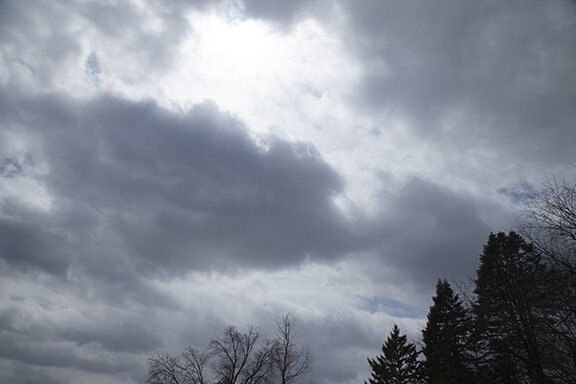Clouds of the Day - May 2, 2020
/Where will Clouds Form?
Don’t let the chart panic you. The cloud photos are below.
Below is a RAOB sounding. Soundings are taken from select locations globally twice daily; at 00Z and 12Z. The Z stands for Zulu which is the same as UTC/Universal Time).
The sounding above was taken at Omaha, Nebraska this morning at 7:00 a.m. CDT. (12Z is 7:00 a.m. CDT). Learn more about telling time near the bottom of our home page.
To make a long story short weather balloon soundings are taken globally at the same time. In the contiguous United States that means when soundings are taken at 12Z it is 8:00 a.m. in the Eastern Time zone, 7:00 a.m. in the Central Time Zone, 6:00 a.m. in the Mountain Time Zone, and 5:00 a.m. in the Pacific Time Zone.
RAOB Sounding above was plotted using the RAOB software Program available here: https://raob.com/
Now to the sounding. The red line is temperature - cooler is to the left and warmer is to the right. The green line is dew point (moisture). The dew point decreases to the left and increases to the right. Look at the altitude scale on the right side of the chart. It is labeled from 5,000 (5) to 50,000 (50) feet. There is also a scale for KM (kilometers). I am not going to discuss the scale on the left side of the chart but it is in millibars of air pressure. The wind barbs going up the right side indicate wind direction and speed. If you look at the Decoding Weather Maps section on this website you will be able to read the wind direction and speed changes with altitude.
For this blog let’s look at moisture vs. temperature. Where the green and red lines are closest together the relative humidity is greatest. Where the lines are farther apart the air is drier. The gray block on the left side of the chart shows where this sounding indicates clouds are most likely occurring. It is just an indication. It is dry in the lower levels below 10,000 feet and above 35,000 feet with clouds likely in between. It means an observer at Omaha at 7:00 a.m. CDT may see clouds in that layer at that time.
I live in Cedar Falls, Iowa which is in northeast Iowa. Notice the wind direction and speed in the moist layer between 10,000 and 35,000 feet above Omaha. Winds are from a westerly direction (from the west) between 20 and 50 knots (23 to 58 mph) at Omaha. Upper air maps showing other weather balloon soundings show the air flowing from Omaha toward east and northeast Iowa.
Cedar Falls is not straight east from Omaha but we might expect that layer of moisture to spread east and pass over Cedar Falls. It’s already here. Below I have posted cloud photos taken at around 9:00 a.m. CDT at Cedar Falls. The clouds are in the zone where we might expect to see them based on the sounding from Omaha.
RAOBS are only a snapshot at a moment in time from a balloon sounding taken as the balloon rises and moves with the wind. It is not a prediction of what will happen a few hours from now or at a location downstream. It is merely an indication of what is occurring now. Soundings are critical in our arsenal of weather forecasting tools. To see the latest soundings from the Storm Prediction Center website click here.
Weather balloon launch photo courtesy of the National Weather Service.
Cirrus - Looking west from Cedar Falls.
Cirrostratus (upper right), Altocumulus (upper left & upper center), Altostratus (lower center & Lower left). Looking South from Cedar Falls.
As clouds lowered and thickened the solar radiation trace showed large short term changes in radiation reaching the surface. Cloud cover was controlling what was reaching the ground. Compare the peak power from today with the peak power from yesterday.
Then the cloud type changed and the ceiling lowered from high to mid-level clouds…
Altostratus with cumulus below. Looking east. Photo taken after very light rain. Trace of rain fell.
Alostratus with cumulus below. Photo looking South-southeast.
Looking south-southwest at altostratus and altocumulus. THere is light rain falling from darkest clouds near the bottom-right of the photo. Rain is very light with radar indicated onlytrace amounts expected. Our relative humidity is 45% so lower levels of air mass is drier than mid-levels.
Altocumulus.
Altocumulus



















































